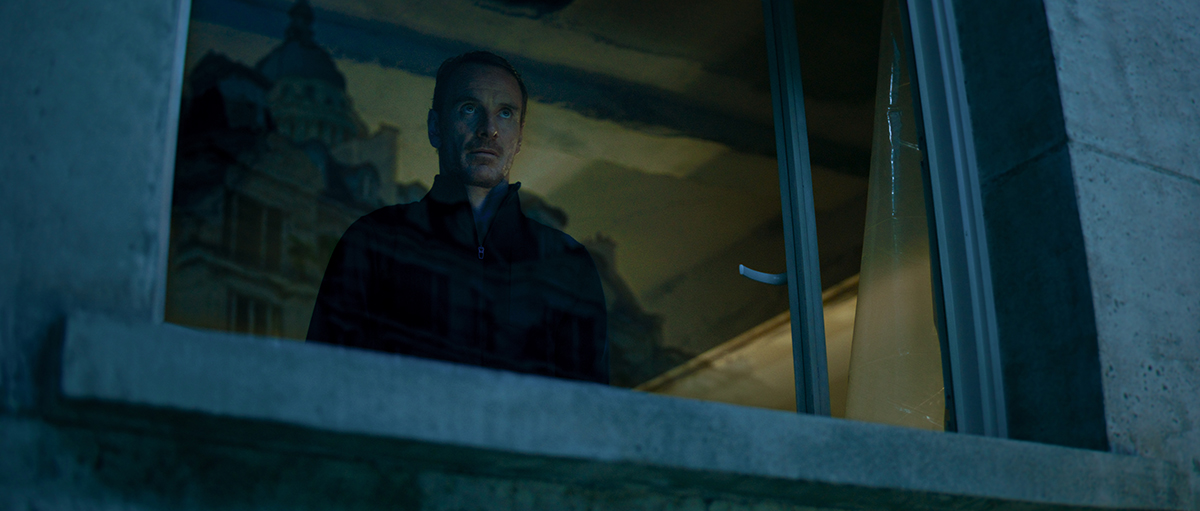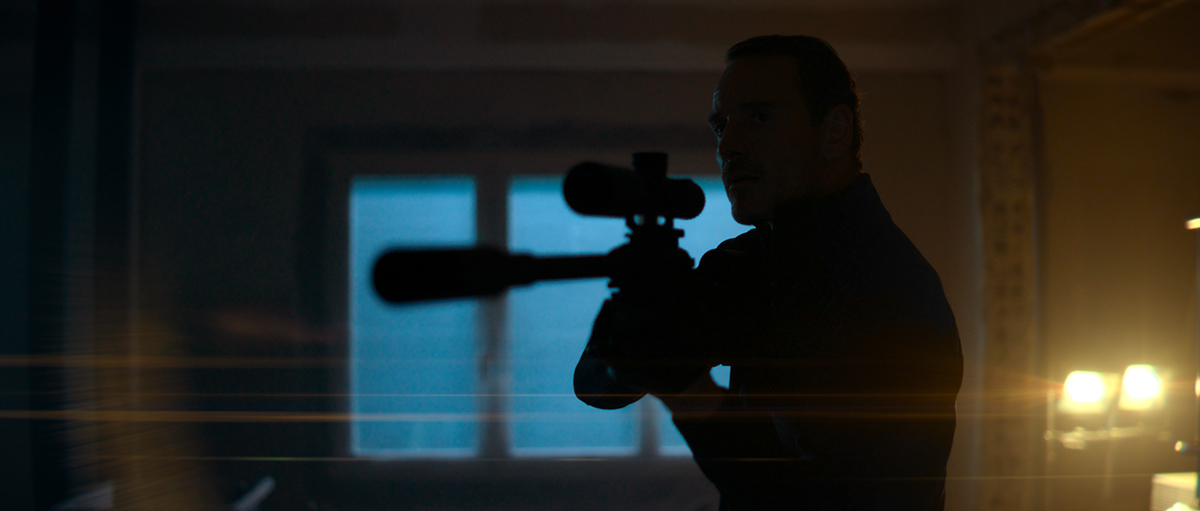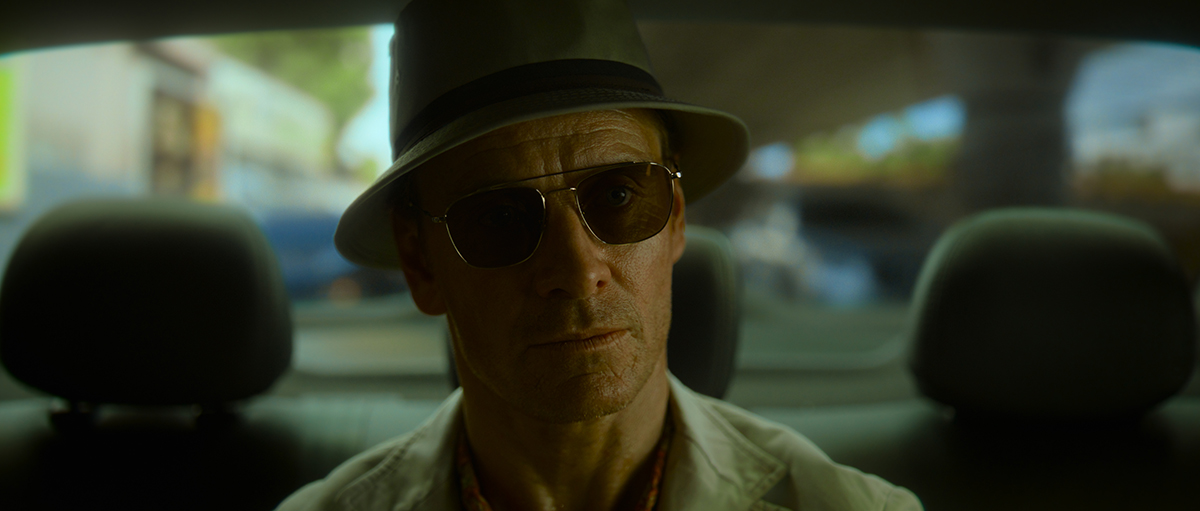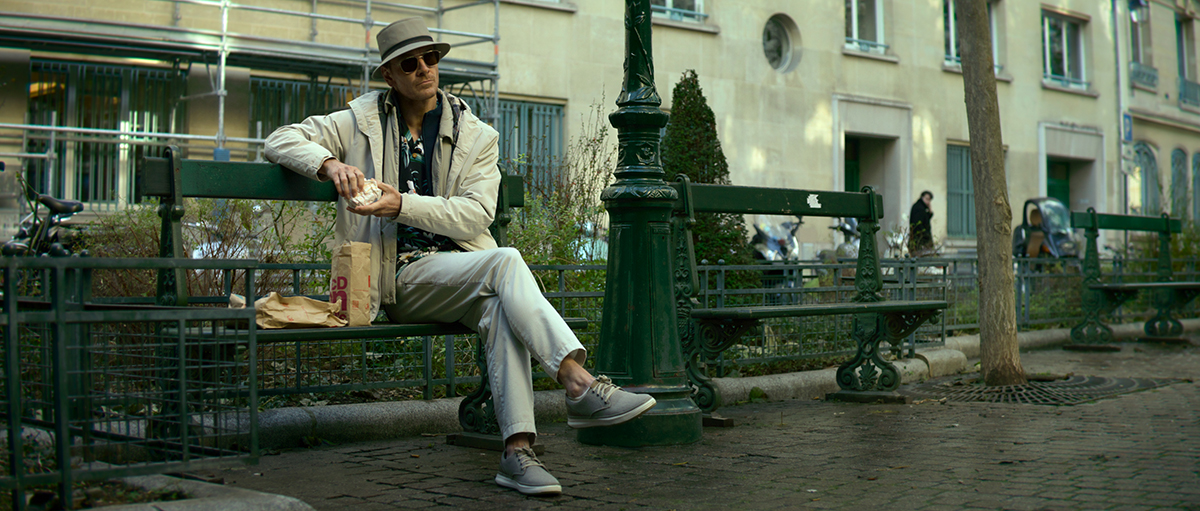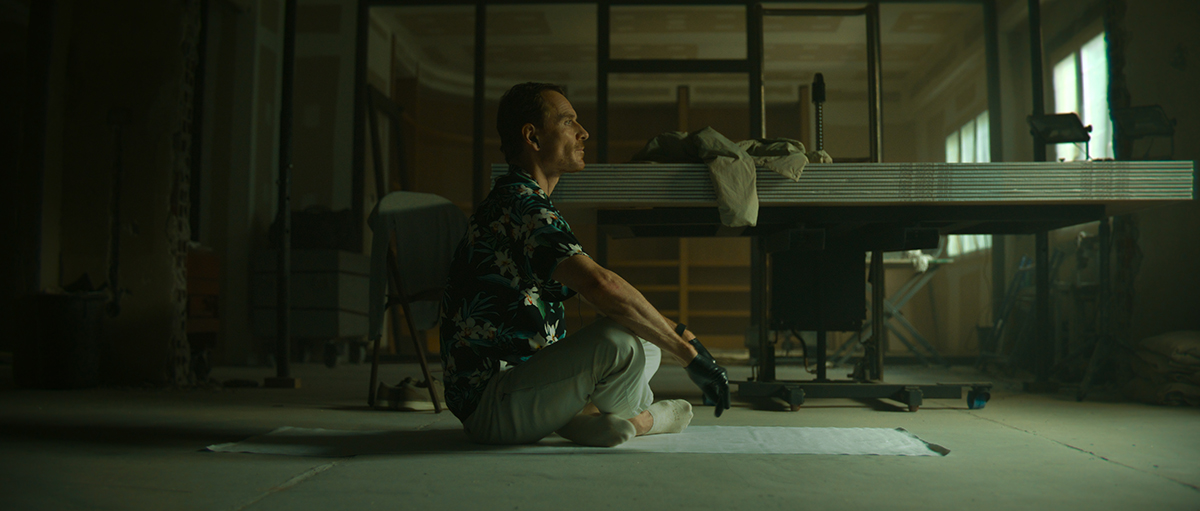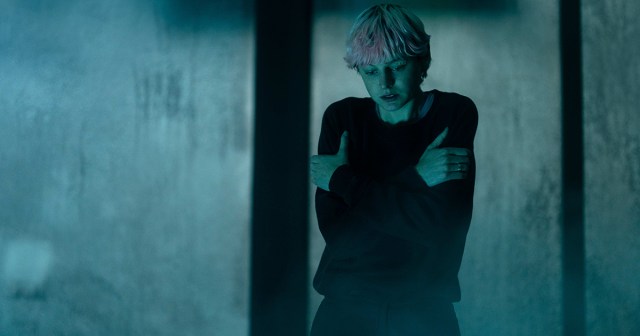“David Fincher told me this is a film about someone’s process, and the camera must be an objective ghost in the room,” says Erik Messerschimdt, ASC, about The Killer, his latest collaboration with the director.
After all, “I think it’s always interesting to watch somebody use their tools with great precision,” Fincher tells The Guardian.
“This is someone who never allows anyone to be close to them, but suddenly you are there – what does that feel like?” the cinematographer elaborated to Emily Murray at GamesRadar.
“I think sometimes we are looking for the bigger picture, the themes, but with this film you can take it as being about all sorts and just go for it – capitalism, nihilism, humanity, etc.
“But, for me, it was all about how you bring the audience to a place they are not used to being: close to this assassin.”
READ MORE: In conversation with David Fincher’s cinematographer Erik Messerschmidt (GamesRadar)
Based on the French graphic novel series of the same name, the film stars Michael Fassbender as the nameless assassin who goes on an international manhunt even if he continually insists to himself isn’t personal.
The Killer “is an eminently re-watchable revenge movie, morbid and sardonic and wickedly funny, the latter of which hasn’t been highlighted nearly enough in early press. Think John Wick, if Keanu Reeves was a sociopath with a penchant for bucket hats, Amazon and inadvertently xenophobic quips about Germans. Oh, and if he loved The Smiths,” sums up GQ’s Jack King.
A key text for Fincher and Messerschmidt was the 1967 crime thriller Le Samouraï from director Jean-Pierre Melville.
Fincher also encouraged Messerschmidt read the source material for The Killer, a French graphic novel by Alexis Nolent.
“I read it in French and I don’t speak French. But it was interesting, because I learned with graphic novels you don’t necessarily need the dialogue, and our film has so little dialogue too. It made me think a lot about composition and framing. We weren’t making Sin City, so it didn’t have to look like a comic, but we did use similar techniques when looking at where to put the camera, how close, etc.”
The lack of dialogue was something he was particularly drawn to, being excited at the prospect that the camera would really have to do the talking.
“All of my initial conversations with David weren’t about style, but instead pace and scene structure. We have a more nuts-and-bolts approach discussing how we are going to tell the story with the camera, then the style is born from that. We were always talking about point of view — when do we see what Fassbender’s killer sees and when do we watch him instead? How does that affect the interpretation of the scene?”
After working on several commercials and television shows, Messerschmidt ended up on the set of director Fincher’s Gone Girl, working as a gaffer.
The duo bonded, with Fincher then recruiting him as DoP on TV series Mindhunter and biographical drama Mank, for which Messerschmidt won the Academy Award for Best Cinematography.
The Killer was shot in Paris, the Dominican Republic and then Chicago and New Orleans. For Messerschmidt, the location scouting was a process of kind of natural discovery.
“We looked at the locations that Fincher had already seen and started to talk about the structure of the movie and it kind of evolved from that,” he told Deadline.
READ MORE: “The Killer:” DP Erik Messerschmidt, Editor Kirk Baxter and Sound Designer Ren Klyce On “The Joy” Of Working With David Fincher (Deadline)
Editor Kirk Baxter told the same Deadline interview about his process: “It was a tricky movie to edit because it’s a straight line in terms of the story. I think people often talk about editorial when you’ve got timelines that are going back and forth, or six different characters that are weaving in and out but we’re following one person all the way through. And surprisingly, it made it actually harder for me, because it’s sort of a highly polished straight line.
“You’re working on the idea of a perfectionist, and he needs to be shown with precision and so it sort of just translates straight back to trying to heighten his world and to make things appear simple.”
“I think for this movie, because it is so much about precision and process, it has to cut so beautifully. It has to cut like butter,” Messerschmidt tells The Film Stage’s Nick Newman.
Unusually for a cinematographer, he says he doesn’t enjoy lighting. “I’m almost reluctant,” he admitted at the Mallorca International Film Festival. “I find that the thing that interests me most about cinematography is how and where we put the camera and how we use it to tell the story.
“The resulting imagery that we create, for me, has to come from that place. But I don’t, I don’t think of myself as a photographer. For me, it’s all about communication with the director about how we’re telling the story and how we’re cutting the cutting the scene apart into pieces that can then later be assembled.”
WATCH MORE: Erik Messerschmidt interview on The Killer, Mallorca Film Festival
“[I]t’s a conversation about balance and color temperature and all the technical stuff. It was much more a conversation about camera direction and scene structure than it was about lighting,” Messerschmidt explains to The Film Stage.
“The film, as a whole, I think is really a conversation about subjectivity and point of view. We wanted to use the technique of putting the audience inside the Killer’s head and then stepping back and being objective, jumping back-and-forth with that. You see it in the movie with sound; you see it with picture,” Messerschmidt says.
READ MORE: “I Don’t Think Directors Should Be Amenable”: Erik Messerschmidt on Shooting The Killer and David Fincher’s Simple Process (The Film Stage)
Working With Fincher
Fincher himself has something of a reputation for being very exacting. He famously asks his actors to perform numerous takes to ensure perfection. Props, such as John Doe’s notebooks in Se7en, are meticulously crafted by hand.
What does Messerschimdt think? “I love it. On a David Fincher film set the decisions are immediate. Like, this shirt or these shoes, this color or that color. I think for David and I now [we have] a shorthand. We walk into a location, we end up standing in the same corner, and we look at each other and know intuitively what we are going to do.”
He adds to GamesRadar, “His reputation is that he’s a very controlling, detailed person and I think that’s terribly unfair. He is the most collaborative person I know and very interested in surrounding himself with people who bring something to the conversation.”
Fincher himself has told different interviewers contrasting things. He told GQ there was no resemblance (except a superficial one), while he also admitted to The Guardian that “There are certain parallels” between himself and the character of The Killer.
Messerschimdt admits that the director can also be “intimidating,” especially on set. “I told myself from the beginning to speak up if you disagree, but you have to pick your moments. I am more comfortable now in speaking my mind, but I also believe it’s a cinematographer’s job to conform to what the director responds to – you are trying to execute their vision.
“Luckily, we have enough shared sensibilities, which makes that easy – we walk onto a location, stand in the same place, look at each other, and nod. You don’t get that too often.”
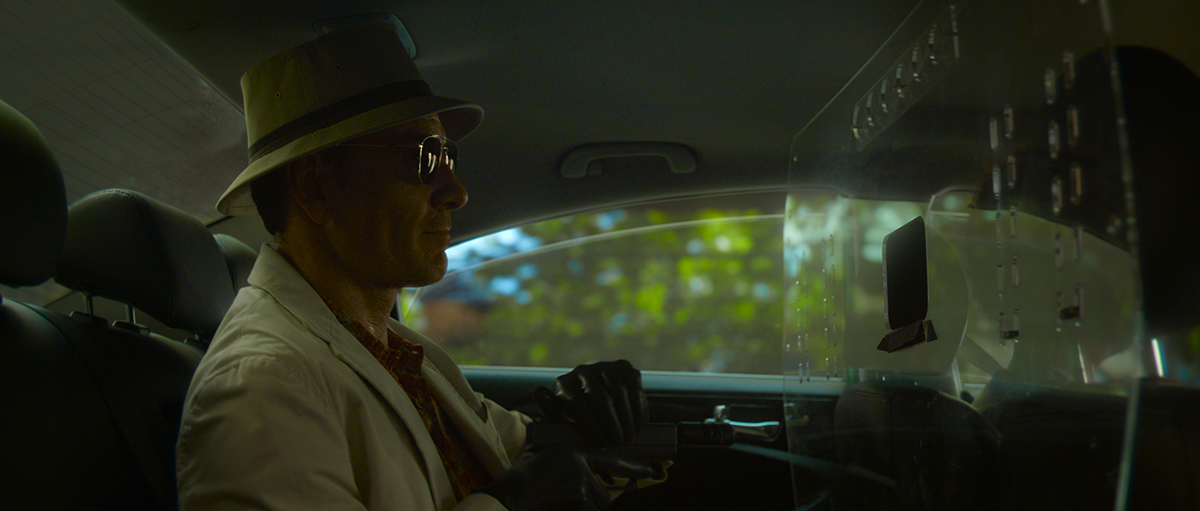
The Killer deploys a soundtrack made of songs from 1980s British band The Smiths which is the music the protagonist listens to on his headphones while getting down to work.
Fincher told GQ: “I love the idea of a guy who has a mixtape to go and kill people. But if we have all of these disparate musical influences, are we missing an opportunity to see into this guy is? So The Smiths became a kind of stained glass window into who this guy was.”
Baxter tells Deadline, “It was David’s idea from the start for the audience to sort of live in the back of the killer’s skull, and we see what he sees, and we hear what he hears. So when it’s his POV, the music that he’s playing, takes over all the sonic space.”
Sound designer Ren Klyce elaborates, “When you see the film you will hear this voice of Michael Fassbender, his interior monologue and in fact, in the film itself, when he’s on camera, he barely speaks. He’s always speaking in his mind. And so that’s a very interesting set of circumstances because on one level you get to know him, but on another, you don’t really know him because it might be his thoughts that are to be trusted or not to be trusted.”
Fincher has been a staunch user of RED’s camera systems over the years, and this continues with The Killer, which marked his first use of their newest unit. “The RED V-RAPTOR [8K W and XL] addressed some color issues we had experienced in the past,” Messerschmidt reports to ICG, “plus it was small enough to go anywhere and was a good match with the KOMODO, which we also used. We also changed up by going 2.35, as scope seemed more appropriate given our location work and many of the shots featuring the killer and his prey together in the frame.”
A-Camera 1st AC Alex Scott was afforded several weeks of prep at Keslow Camera, readying ten cameras for Paris and shipping twelve cameras for plate views down to the Dominican Republic. “There was only limited second-unit work,” Scott also tells ICG. “For driving shots in the DR and a splinter unit for New Orleans [DP’d by Tucker Korte]. The plate cameras had full-frame Sigma Zooms. They determined the necessary angles, and then we’d measure things out with the corresponding vehicle and a stand-in on stage in prep so the plate camera could match our notes.”
READ MORE: Dead Reckoning — Oscar-Winner Erik Messerschmidt, ASC, Draws a Bead on the Mind of an Assassin in David Fincher’s “The Killer” (ICG)
The globetrotting scope of the film tracks with other contract killer stories.
As Messerschmidt notes: “The movie is told in chapters, with the character in a different locale each time, progressing from Paris to the DR, Florida, Chicago and New York City. Perhaps sixty or seventy percent of the interiors were shot on stage in New Orleans.” New Orleans also stood in for Florida, with St. Charles, Illinois filling in for N.Y.C. scenes. Shooting finished in L.A., where additional shooting was done months later.
“The tone and visual aesthetic was established and maintained on the set,” adds Messerschmidt. “We’ve had the same post supervisor and same colorist [Eric Weidt] for some eight years, and have developed a very streamlined color-management workflow on set: a single show LUT, no CDL’s, no LiveGrade. We monitored in HDR on-set with Sony 17-inch monitors and had HD dailies – editorial had HDR as well – in DCI-P3 and Dolby PQ Gamma.
“We had some abstract conversations about what these various parts of different countries looked like and felt like,” he elaborates. “David was emphatic that the audience experience each one as a discrete and different environment.
“To me, Paris always feels cool and blue, especially at night and even in summer. That cool shadow, yellow highlight look was a big part of the night work there, and it developed from stills we took while scouting.”
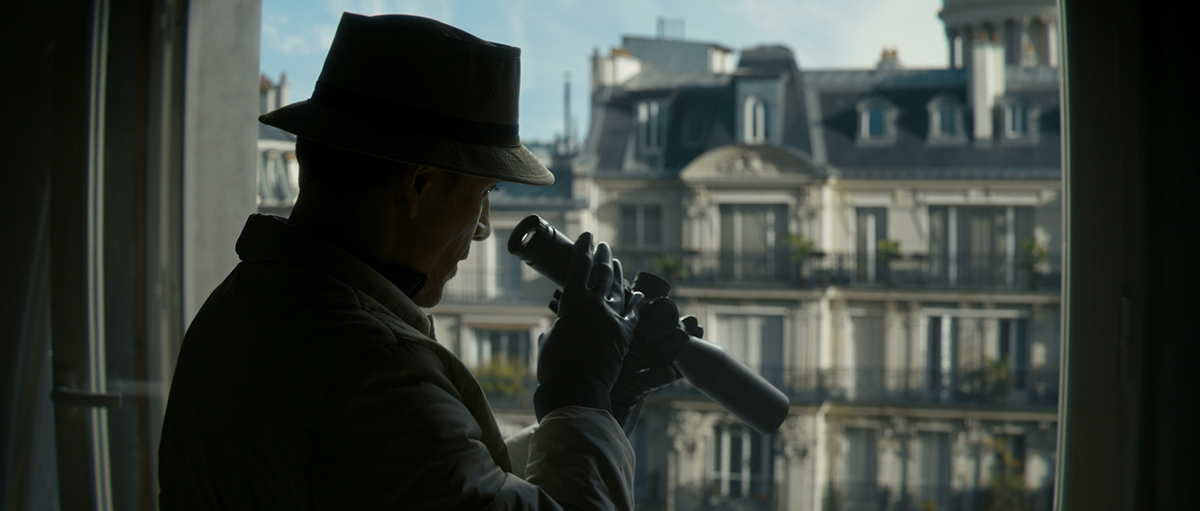
Messerschmidt explains to The Film Stage: “Paris, to me, always kind of feels like it has this split-tone quality to it: at night it has this coolness that’s contrased agains the bright, sodiumvapor sreetlights that central Paris is famous for.”
In contrast, for the Dominican Republic, he says, “I started thinking about what humid looks like and what Santo Domingo looks like. It’s… a cornucopia of various colors.”



